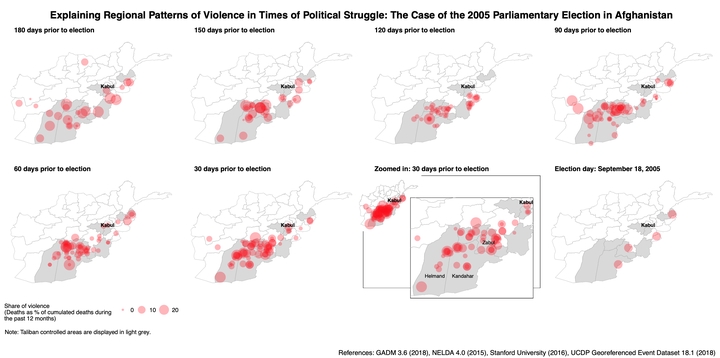Explaining Regional Patterns of Violence in Times of Political Struggle - The Case of the 2005 Parliamentary Election in Afghanistan

Abstract
We analyze whether and how elections affect patterns of violence during conflict. Our main argument is that rivaling parties use elections strategically to reveal the other party’s weaknesses and/or to garner support. Besides an increase in violence during the pre-election phase in general, we also expect to see a concentration of violence in specific, strategically important areas, i.e., regional strongholds of the warring parties. We illustrate our assumptions with geo-spatial analysis in form of a map featuring the regional concentration of violence prior to the 2005 Parliamentary election in Afghanistan. Our analysis shows support for our assumptions. We observe an increase in violence the closer the election gets as well as a concentration of violence in the regional stronghold of the government, i.e., the capital and other important areas.